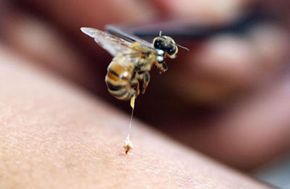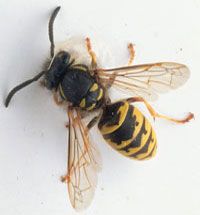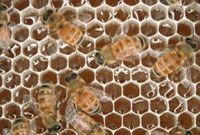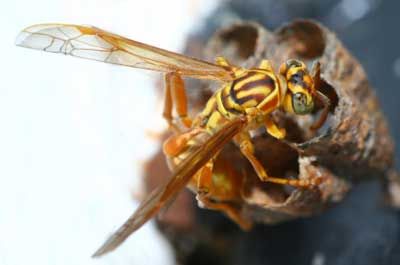You're on a summer picnic, lounging in the sun with your eyes closed after eating your turkey sandwich. Something buzzes by your ear. You lazily swat at the sound and then -- ouch! -- you feel that familiar, aching sting on your cheek. As your face burns red and swells, the last thing on your mind is whether that pesky, no-good insect was a bee or a wasp.
Insect Image Gallery
Advertisement
But we at HowStuffWorks want to know. Was it a bee that stung your cheek, or was it a wasp? What's the difference between these two droning, stinging creatures?
In the preceding scenario, your attacker was most likely a type of wasp. Why? Because wasps are generally more aggressive and likely to stalk public gatherings in search of human food. Bees are more mild-mannered. They focus on the flowers, not your turkey sandwich.
That's just one way to determine whether the attacker was a bee or a wasp. What other characteristics define these two very similar creatures -- both of which belong to the order Hymenoptera? More than 25,000 kinds of each insect exist, but there are several relatively simple ways to distinguish between them.
On the next page you'll learn how physical characteristics, eating habits and nesting sites distinguish the bee from the wasp. You'll also learn which insect can brag about its slender, tapered waist and which one has to live with flat, hairy legs.
Advertisement




